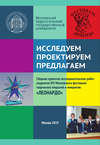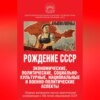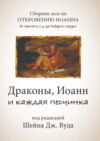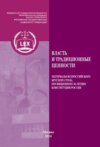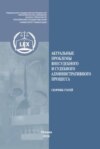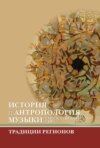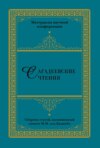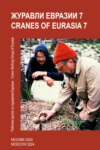Kitabı oku: «Исследуем. Проектируем. Предлагаем», sayfa 11
Секция «Человек и глобальный мир. Иностранные языки»
В чем сила волонтеров
La forza del volontariato
Рябцева Юлия
ГБОУ города Москвы «Школа № 1409»
Руководитель:
Давыдова Елена Валерьевна, учитель итальянского языка
Da ricerche fatte si è scoperto che lo stato di un paese non può fare abbastanza per la quantità di persone che hanno bisogno di aiuto. Ecco perché si sono create delle organizzazioni di volontariato non-profit. E queste organizzazioni sono state riconosciute da tutto il mondo. Anche se, fare volontariato non è una cosa facile. Una persona deve avere voglia di aiutare gli altri e di aiutare il mondo. Questa cosa non si fa per soldi ma si fa perché lo sente il cuore.
Per fare volontariato non bisogna per forza pensare in grande perché anche le piccole cose possono essere importanti. Per esempio, con i ragazzi della mia classe abbiamo aiutato i bambini orfani portandoli le cose che non potevano permettersi di comprare tipo: ziaini, libri, quaderni, penne ecc. Cosi facendo senza nessun grosso impegno abbiamo reso felice qualcuno.
Oggi ci sono tante associazioni dove puoi andare per diventare un volontario ma, per aiutare una persona cieca o sorda non c’è bisogno di farlo. Perché le associazioni servono anche per accompagnare i disabili agli eventi importanti, e anche per portare aiuto agli animali abbandonati che vengono chiusi nelle strutture preposte. Mentre per le persone anziane che non possono essere trasportate fuori, ci sono dei volontari che si recano presso le loro case. Secondo me questa forma di volontariato la farei con piacere. Porterei a queste persone un po’ di compagnia, un po’ di serenità per trascorrere una giornata non in solitudine: leggere un libro insieme, ascoltare un po’ di musica ma, sopratutto ascoltarli. Facendo ciò ci si accorge dai loro sorrisi che quella persona rinasce.
Per continuare, circa 50 per cento dei volontari ha un lavoro e dedica la maggior parte del tempo libero e delle ferie a rispettare il suo impegno sociale. Per fortuna che tanti giovani sono interessati a lavorare presso queste organizzazioni, pur sapendo che non guadagneranno molti soldi ma, la voglia di essere utuli è più importante del denaro. Questo li fa onore.
Литература
1. Волонтерство. URL: https://ru.wikipedia.org/wiki/ Волонтерство (дата обращения: 20.02.2018).
2. Программа П.Р.И.Я. Официальный сайт. URL: http://programma-pria.net/ru (дата обращения: 20.02.2018).
3. ФГБНУ «Центр защиты прав и интересов детей». Официальный сайт. URL: https//fcprc.ru (дата обращения: 20.02.2018).
Российско-итальянские архитектурные взаимосвязи (экскурсионная программа для итальянских друзей)
Le relazioni architettonici Russi-Italiani (programma di escursioni per gli amici italiani)
Сергеев Никита
ГБОУ города Москвы «Школа № 1409»
Руководитель:
Дурново Елена Анатольевна, преподаватель дополнительного образования по архитектурному рисунку
Introduzione
È già da un po' di tempo che ho scelto la mia futura professione: sogno di diventare architetto. Per questo quando viaggio nutro sempre un vivo interesse per i dettagli architettonici. Quando ero a Verona io e I miei amici russi e italiani siamo andati nel centro storico. Abbiamo passeggiato sulle rive dell’Adige verso Castelvecchio. Abbiamo proseguito fino al ponte Scaligero, e lì ho notato qualcosa di familiare – le caratteristiche “code di rondine” note anche come “merlatura ghibellina”. Non è un segreto che alla costruzione del Cremlino presero parte architetti italiani. Ma non dobbiamo dimenticare che a erigere il Cremlino di Mosca sono stati dei grandi architetti russi, e proprio questo connubio lavorativo ha portato alla realizzazione di un perfetto capolavoro architettonico. Siccome fin da bambino studio italiano e mi piace la cultura italiana, per me è molto interessante apprendere i legami architettonici italo-russi e trovare a Mosca altri esempi di collaborazione e sinergia tra Italia e Russia, e questa è diventata la mia materia di indagine.
Lo scopo del mio lavoro è formare un percorso a Mosca, nel quale io possa condurre I miei amici italiani e mostrargli queste opere architettoniche.
Per la realizzazione di questo obiettivo mi sono prefisso I seguenti compiti:
1. Imparare la letteratura e le risorse informative sugli impianti architettonici costruiti a Mosca dagli italiani in differenti periodi storici.
2. Stilare una breve descrizione storico-architettonica per ogni monumento o edificio.
3. Studiando la disposizione dei monumenti e degli edifici, costruire il percorso ottimale delle escursioni.
4. Effettuare l’escursione per I mie amici italiani (in russo e in italiano).
Gli obiettivi prefissati sono stati determinati principalmente dalla sfera di indagine: l’architettura è la necessità di rivolgersi agli altri settori di conoscenza, come il design, la storia, la linguistica, ecc…
Testo
Avendo studiato la letteratura, ho trovato informazioni su sei edifici, frutto della collaborazione tra architetti russi e italiani.
Il più importante di tutti è naturalmente il Cremlino, e in particolare le torri Spasskaja, Beklemiševskaja, Nikol'skaja, Tajnickaja, Vodovzvodnaja, Borovickaja, Uspensky Sobor, la Chiesa della Deposizione della Veste, la cattedrale dell'Annunciazione, la Cattedrale dell'Arcangelo, il Campanile di Ivan il Grande e altri simili edifici. Tutte queste costruzioni furono erette nel periodo che va dal 1479 al 1516. Molti architetti italiani a quel tempo si chiamavano frjazy, como e tutti quelli che venivano dal Sud Europa. Alla costruzione del Cremlino di Mosca parteciparono Aristotele Fioravanti, Aloisio da Milano, Antonio Gislardi, Bon Frjazyn, Marco Ruffo, Pietro Antonio Solari.
Il secondo edificio di cui vi parlo e il Palazzo di Franz Lefort situato in via 2-a Baumanskaya. In principio l’edificio fu costruito su ordine di Pietro il Grande per un suo amico: Franz Lefort, generale e ammiraglio. Il Palazzo è stato costruito a cavallo tra il 1697 e il 1698 sotto la direzione di Dmitri Aksamitov. Nel 1707 Pietro il Grande regalò il palazzo a un altro suo amico: il principe Aleksandr Menshikov, che ampliò il palazzo. Fu costruita anche il monumentale arco. L’autore della ricostruzione del palazzo fu l’architetto Giovanni Maria Fontana. Nel 1727 a Menshikov furono confiscati tutti i suoi averi e il Palazzo di Lefort tornò di proprietà della tesoreria. Attualmente al suo interno è conservato l’Archivio Storico di Guerra.
L’edificio successive del nostro percorso è la tenuta di Orlov-Denisov sulla Grande Lubianka. Nel diciassettesimo secolo al posto della tenuta ci misero le stanze del principe Dmitry Pozharsky, di fronte alle quali prima si trovava la barricata, sulla quale Pozharsky fu gravemente ferito. L’unica cosa che si è salvata delle stanze al giorno d’oggi somo le pareti della cantina della villa. Dopo la morte di Dmitriy Pozharsky la tenuta ha cambiato molte volte proprietario. Dopo i Golitsyn è passata ai principi Khovansky, poi ai Naryshkins. Si pensa che sotto i Naryshkins le stanze siano state ricostruite. Quando il comandante in capo Mikhail Volkonsky possedeva la tenuta, la casa principale fu ricostruita secondo i suoi desideri, per questo fu coinvolto anche l’architetto Francesco Camporesi. Attualmente l’edificio è di proprietà federale ed è sotto restauro.
La quarto fermata della nostra escursione è la casa di Lobanov-Rostovsky sulla Myasnitskaya. Nel diciassettesimo e diciottesimo secolo sulle terre dell’antica via Myasnitskaya ci si stabilirono nobili e mercanti e la via fu abbellita da case di pietra. Uno di nuovi proprietari era Fyodor Kazmin. Nelli anni cambiarono i proprietari e gli stili architettonici. Dopo il nuovo proprietario della casa diventò il generale Pyotr Ivanovic’ Panin. Sotto di lui fu ricostruita la vecchia villa. Nella vecchia casa furono installate nuove ali e cambiarono la decorazione delle facciate. Più tardi, nel 1791 il proprietario della tenuta divenne Aleksandr Lobanov-Rostovsky. Spesso l’autore del proggetto sostengono sia stato Matvey Kazakov. Anche se nessun documento testimonia questo fatto. E’ più che possibile che l’architetto fosse Francesco Camporesi. Secondo il suo progetto la villa avrebbe dovuto allungare le facciate che davano sulla strada: furono installate stanze aggiuntive con sale cerimoniali. Negli anni intorno al 1820 qui si trovava “la Scuola di disegno relativa all’arte e ai mestieri”, nel 1826 la tenuta passò a Aleksey Fedorovic Malinovskiy, un famoso storico. A quei tempi spesso andava ospite Aleksandr Sergeevic Pushkin.
L’obiettivo successivo del nostro percorso e l’edificio del Vecchio Gostiny Dvor. Nel quindicesimo secolo questo territorio era un importante centro per il commercio. La parte in pietra fu costruita in torno al 1590 e ricostruita nel diciassettessimo secolo, e poi Gostiny Dvor fu ingrandito. Nel 1786 il comandante in capo di Mosca Jacob Bruce dimostrò a Caterina Seconda che il palazzo era vicino a cadere. Dopo questo Caterina Seconda fu d’accordo a vendere Gostiny Dvor a chi lo desiderasse con l’obbligo che lo ricostruissero della stessa misura. Nel 1789 da San Pietroburgo inviarono il progetto fatto dal famoso architetto italiano Giacomo Quarenghi. Attualmente l’edificio e la proprieta de città ed è un monumento storico.
Il sesto e ultimo punto del nostro percorso è l’ospedale di Sheremetievo. In conte Nikolai Petrovic Sheremetiev, uno degli uomini più ricci della Russia invento la costruzione dell’ospedale per cento persone al inizio del 1790. L’apertura dell’ospedale avvenne dopo 7 anni, il ventotto giugno 1810. I primi pazienti furono ufficiali in pensione e anziani poveri della città.
A condurre questo progetto fu il maestro del classicismo Giacomo Quarenghi, il quale come sempre lo fece senza uscire da San Pietroburgo. Nei tempi sovietici il panorama fu danneggiato dalla costruzione dell’altissimo istituto Sklifosovsky tipico dell’architettura di Brezhnev.
Nel 1996 nonostante le perdite, fu deciso di inserire questo insieme architettonico all’Ospedale di Sheremetyevo nella lista del Patrimonio mondiale.
Conclusione
Il mio percorso è pronto e io sarò felice di mostrare a miei amici italiani questi monumenti architettonici.
Il lavoro su questo progetto mi ha portato alle seguenti conclusioni.
La collaborazione, che unisce i popoli e permette di creare tali capolavori, che restano per secoli e fanno la nostra gioia con la loro estetica e funzionalità, e proprio quello che rappresenta per me l’architettura.
L’architettura è l’unione dei popoli, elemento principale per la vita e l’arte, l’amicizia e la collaborazione.
Литература
1. Векслер А. Г. Манеж и Манежная площадь Москвы. Горизонты истории. М., 2012.
2. Русская архитектура. URL: https://ru.wikipedia.org/wiki/ Русская_архитектура (дата обращения: 20.02.2018).
3. Молокова Т. А., Фролов В. П. Влияние итальянской архитектуры на градостроительство России // Вестник МГСУ. 2011. № 4. С. 128–134.
4. Русский город. Архитектурно-краеведческая библиотека. URL: http://russiancity.ru/books/b11.htm (дата обращения: 20.02.2018).
5. Что построили итальянцы в России // Италия по-русски. 13.11.2009. URL: http://italia-ru.com/page/chto-postroili-italyantsy-rossii (дата обращения: 20.02.2018).
6. 7 великих итальянских строителей России // Русская семерка. 18.07.2013. URL: http://russian7.ru/2013/07/7-italyanskix-stroitelej-rossii/ (дата обращения: 20.02.2018).
Значение ошибок при переводе с английского языка
The impact of mistakes in translating from English into Russian Annotation
Сломинская Софья
ГБОУ города Москвы «Школа № 1575»
Руководитель:
Солосина Оксана Анатольевна, учитель английского языка
Topic: 'The impact of mistakes in translating from English into Russian'
Author: Sofya Slominskaya
Supervisor: Solosina Oksana Anatolyevna, English teacher
Actuality: Nowadays a lot of data is mistranslated, which stops people from understanding the information correctly.
Problem: Mistakes in translation can change the meaning of the text.
Subject: the English language.
Hypothesis: If you know the most common mistakes in translating, you can avoid them.
Goal: Study different types of mistakes and make a conclusion.
Studying methods: collecting, rearranging and analyzing information.
Plan: collecting, rearranging and analyzing information.
Brief description: A study of different factors and mistakes when translating from English.
Main conclusion: There are a lot of traps when translating from English into Russian.
Introduction
An incredibly large number of works, both literary and scientific, are translated from English and other languages. In certain professional spheres, you need, for example, a book which is available only in a foreign language. With the help of translation, you can access almost any information in every corner of the world, and therefore its accuracy is extremely important. Of course, not all translation errors significantly affect the text, but due to such errors, the meaning of the text and its perception can change. I would like to focus on these mistakes, because they are the most common. In the process of my research, I plan to find the ways to avoid any mistakes and also to understand the impact of errors in translation in history. As it turned out, these mistakes influenced even the political situation in different countries. I believe that such a study will be very important in a modern, ever-changing world. The relevance of the work lies in the universal use of foreign resources, and they can be understood with accuracy without any errors in the translation of the text. Therefore, it is so important to be aware of the most frequent errors in translation. It is assumed that, being aware of the different subtleties of the translation, you can convey the correct information to the reader.
Translation mistakes in history
Throughout the history of mankind, translation errors have engendered diplomatic conflicts and misunderstandings that have lasted for centuries. Translation is a simple thing and some people believe that it can be done using Google Translator. However, it is no longer funny when it comes to important articles or documents.
It is hard to believe that translation errors in international relations continue to be made in the modern globalized world and, particularly, in the EU space. Nevertheless, it is true. In November 2013, the entire Spanish press (under the influence of news agencies) wrote that the official representative of the European Commission called the statement of Minister Vert "garbage". In fact, the representative of the European Union for Education Dennis Abbot used the word "rubbish", which can really mean "junk", but in this context the correct translation would be "absurdities". It is not the same. Abbott tried to solve the problem, but without much success.
What happens when a bad translation is mistaken for the right one? Here are the six most famous translation errors that changed the course of events.
1. The Horns of Moses
During the Late Gothic period and until the second half of the Renaissance, Christian artists and sculptors portrayed Moses with horns on his head. And the reason for this was a mistake made by St. Jerome, the patron of translators.
His translation of Vulgate into Latin (The Common Bible) was the official text of the Catholic Church for 1,500 years (from 382 to 1979), but it contained a curious error. The expression “keren”, which in Hebrew means the shining face of Moses, was erroneously translated as "horns". It was nonsense, but who would doubt the sacred text?
2. The Threat ofKhrushchev
In 1956, when the Cold War was in full swing, the Soviet leader Nikita Khrushchev made a speech at the Polish embassy at a banquet attended by many ambassadors of Western countries. The guests were literally dumbfounded when they heard the following words from Khrushchev: "Whether you like it or not, the history is on our side. We'll bury you!".
In the conditions of a fierce arms race, the Western press took his words as a direct threat, but the Soviet side hastened to state that Khrushchev had been misunderstood, and his words had been taken out of context.
In fact, the Soviet leader meant Marx's phrase from "The Manifesto of the Communist Party" that the bourgeoisie generates its own gravediggers. The correct translation of his speech, which does not need to be verbatim, would sound like this: "Whether you like it or not, the history is on our side. We will live to see that you are buried". It cannot be said that this is a very friendly phrase, but in any case, it was an ideological slogan, not a threat.
3. Channels on Mars
In 1877, an Italian astronomer Giovanni Schiaparelli made one of the first descriptions of the Martian surface. The director of the Milan Observatory, Brera, thought that he saw continents and canals on Mars.
In 1908, an American astronomer Percival Lowell reconsidered the results of Schiaparelli's work and came to the conclusion that the channels were built by intelligent creatures to deliver water (which was missing from the Martian surface) from the polar regions to the desert regions. This statement gave rise to many myths and legends about the Martians, despite the fact that it was the result of a translation error.
Schiaparelli never considered the Martian channels the work of humans. In fact, he used the Italian word "canali", meaning a pass or a gorge, that is, an exclusively natural object.
4. The word that led to an atomic bombing
On July 26, 1945, the countries of the anti-Hitler coalition published the Potsdam Declaration, which specified the conditions for the surrender of the Japanese empire, stressing that in case of refusal, "rapid and complete destruction" was waiting for it.
